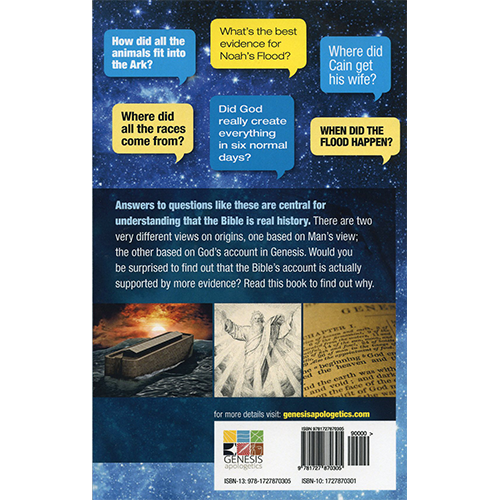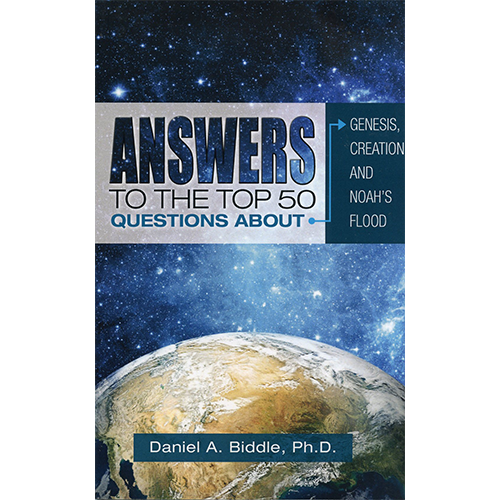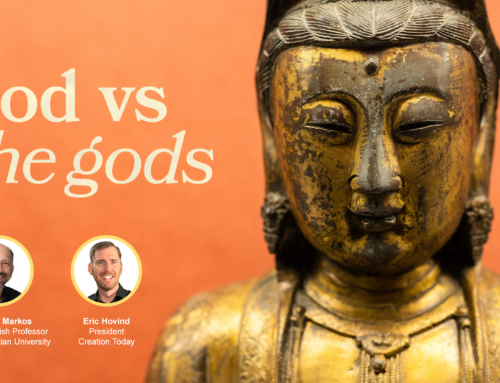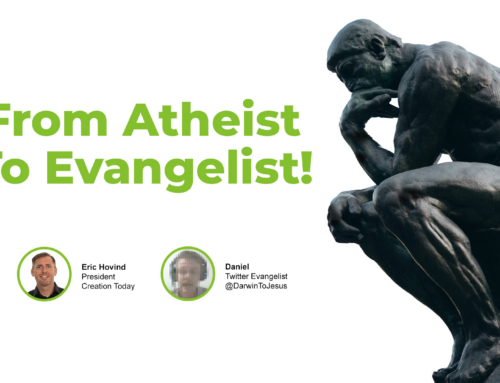MYTHICAL Creatures in the Bible?
Three intriguing words appear on the pages of Holy Writ—unicorns, dragons, and the Nephilim. Are these actually mythical creatures, and if so, what purpose would God have for placing them in Scripture—a book devoted to supernaturally presenting absolute Truth? Does their presence in the Bible discredit it as merely a book of fairy tales as many scoffers claim? Let’s delve into the study of these words to find out.
UNICORNS
Unicorns are mentioned in the Bible nine times in the books of Numbers, Deuteronomy, Job, Psalms, and Isaiah and have become one of the “problematic” creatures referred to in Scripture. From our 21st-century understanding presented in books and movies, we have come to think of this creature as a beautiful, magical, mythical horse. Thus, it has become an excuse for scoffers to dismiss the Bible as a book of fairy tales. However, a closer examination of the original English definition and the word’s origin and may give us a different picture.

Original English Definition
Noah Webster’s first dictionary, his 1828 edition, lists “unicorn” with the following definition: “an animal with one horn, the monoceros. This name is often applied to the rhinoceros.”
If we look up the word “rhinoceros” in the same dictionary, it defines rhinoceros as: “A genus of quadrupeds of two species, one of which, the unicorn, has a single horn growing almost erect from the nose. There is another species with two horns, the bicornis. They are natives of Asia and of Africa.” According to Noah Webster, back in the early 1800s, there were two species of the rhinoceros. The one-horned species was called unicorn and the two-horned species was called bicornis.

Latin Word Origins
Still today, the scientific name of the Asian one-horned rhinoceros is rhinoceros unicornis, and the scientific name for a two-horned rhinoceros is diceros bicornis. Both unicornis and bicornis are Latin words. Looking at these two words as found in a Latin Bible, Psalm 92:10, uses the Latin word unicornis, transliterated by the King James Bible translators as “unicorn.”
Looking at Deuteronomy 33:17, this verse uses the Latin word rinocerotis, referring to a two-horned rhinoceros. The King James translators also transliterated this word, rinocerotis as “unicorn.” Care must be taken when referring to transliterated words in the text, as in this case two different words were transliterated as the same word.
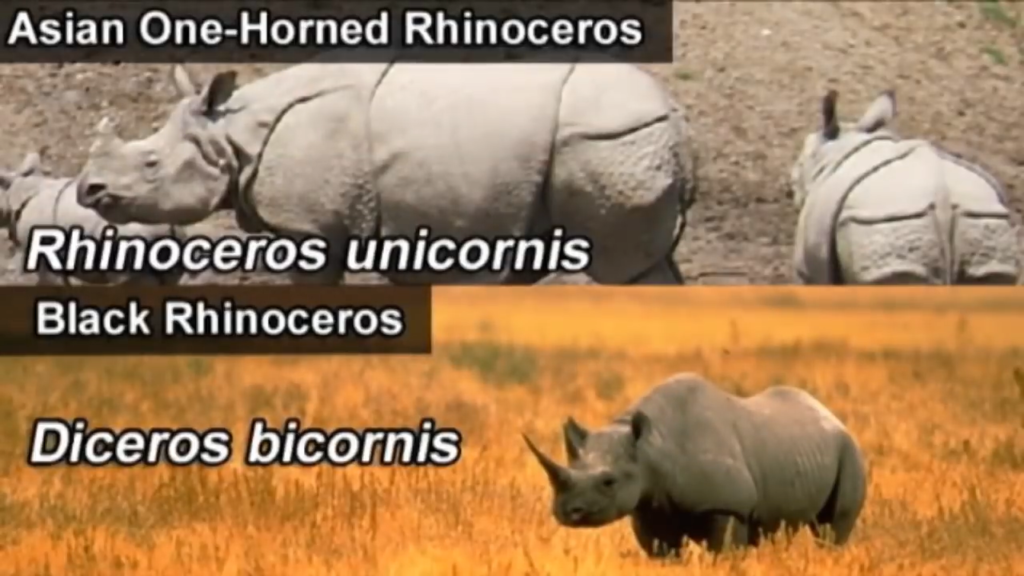
Honing in on God’s Divine Inclusion of Unicorns in the Bible
With this knowledge of the biblical unicorn’s meaning, the nine passages in which we find “unicorn” may be studied with a far greater understanding of the text’s meaning. Each passage hones in on how powerful God, the creator of the universe, truly is. While we may explore even more details about the creatures referred to as “unicorn” and “unicorns” in the Bible, far more important is the reality that the creatures existed. The Bible clearly describes real animals—not fantasy animals as have been popularized by many books and movies—and uses these strong creatures to further demonstrate God’s power. Hmmm . . . the Bible got unicorns right after all!
DRAGONS – DINOSAURS
Genesis 1:24 “And God said, Let the earth bring forth the living creature after its kind, cattle, and creeping thing, and beast of the earth after his kind: And it was so.”

Is the Word “Dinosaur” Found in the Bible?
The word “dinosaur” wasn’t coined until 1841, thousands of years after the Holy Book was penned. The creatures we now refer to as dinosaurs were called dragons throughout most of history. Not only does the Bible use the word “dragon” repeatedly, 21 times in the Old Testament and 12 times in the Book of Revelation, but the Book of Job also describes creatures called Behemoth and Leviathan, whose attributes match large, reptilian beasts—like dinosaurs. (See the Book of Job, chapters 40 and 41.)
Today, we continue to discover physical evidence of many creatures that no longer exist, including reptiles known as dinosaurs. Yet the controversy rages: Did these creatures evolve into existence and eventually become extinct millions of years before humanity stepped onto the scene? Or were humans and dinosaurs created by God; co-existing for centuries before saurian extinction?
Part of the Original Creation?
If God created everything in six days, with land animals and humans both coming into existence on day six (Genesis 1:24-31), then humans and dinosaurs did occupy the same world at the same time. However, God’s perfect creation didn’t remain a utopian habitat after Adam and Eve sinned bringing God’s judgment. Eventually, wickedness increased to the level that God destroyed everything on earth with a worldwide flood, sparing only Noah and his family and animals on the ark.
Dinosaurs on the Ark?
Scoffers reject the notion that anyone from ancient times could build a boat large enough and sturdy enough to hold all of the animals, especially the dinosaurs. However, the same God who created the world, and warned Noah of the upcoming disaster, provided him with the exact specifications he needed to build a seaworthy vessel and brought to Noah the minimum number of animals to preserve every kind. This included dinosaurs—not the biggest, but the appropriate smaller saurians who could preserve the population. So what happened to the dinosaurs?
What Happened to the Dinosaurs?
After the Flood, the earth was vastly different, a factor in the size of dinosaurs which continue growing all their life. Also different was everyone’s diet. No longer were man and animals vegetarians, but rather, became meat eaters. Throughout history, the meat-eating dragons have been a huge part of each culture, replete with legends of flying reptiles, as well as monsters of land and sea. Ancient man did not believe dinosaurs were a thing of the past, but a veritable threat. They were hunted for sport, food, and medicine. By the Middle Ages, dragon sightings became rare. Today, archaeologists continue discovering drawings and artwork with pictures of the creatures we now call dinosaurs, many with mankind! So why is there a concerted effort to deny the co-existence of these creatures with humanity? Quite simply, because the co-existence of dinosaurs with mankind would destroy the foundations for the evolution theory.
Dinosaurs—One of God’s Masterpieces

Through God’s Word, historical records, and archaeology evidence, we find that dinosaurs were part of the original creation. Adam and Eve lived with them in the Garden of Eden; Noah took them on the Ark; and mankind has interacted with them and been fascinated by them for over 6,000 years. It is only in recent times that there has been a concerted effort to assert their extinction before the dawn of humanity. This error has led many to question the Word of God and thereby to deny the reality of Creation, the Flood, and the Coming Judgment. While over the centuries, science has proven to be like shifting sand, God’s Word remains unchanging and accurate to the finest detail. This includes the details found in the bible regarding one of God’s masterpieces—the dinosaurs!
Genesis 1: 31 “And God saw everything that He had made, and, behold, it was very good.”
Hmmm . . . the Bible got dinosaurs right after all!
THE NEPHILIM
 Seemingly out of nowhere, the expression “the Nephilim” or “the giants on the earth” (depending on the translation you reference) appears in Genesis 6:4. Who were these giants? Where did they come from? Interpreters have debated their identity for nearly two thousand years.
Seemingly out of nowhere, the expression “the Nephilim” or “the giants on the earth” (depending on the translation you reference) appears in Genesis 6:4. Who were these giants? Where did they come from? Interpreters have debated their identity for nearly two thousand years.
A study of this passage reveals several possibilities as to the Nephilim identity and careful examination of all the biblical evidence is needed for a proper investigation of these creatures. This research must first start with defining “the sons of God” in the passage.
Sethite Interpretation: Generally, there are three basic views. The Sethite position presents the “sons of God” as godly men from the line of Seth and the “daughters of men” as ungodly women from Cain’s line who married. These marriages produced wicked children (the nephilim) who became men of renown, possibly due to their extreme wickedness.
Royalty Interpretation: Those who hold the royalty position see the “sons of God” as polygamous kings, nobles, or tyrants who viewed themselves as gods. These kings lusted for power and “took wives” from among the common people, forcing them to join their harems. Some adherents of this position believe the passage was written to show the pagan nations that their kings were not gods and their gods were demonic.
Fallen Angel Interpretation: Advocates of the Fallen Angel position view the “sons of God” as heavenly beings that married women and had children with them. These children, the nephilim, were “mighty men,” “men of renown,” “giants.”
All these views agree that, the Nephilim were the offspring of the “sons of God” and women, and were creatures of ill intent. Many promote that because the word Nephilim comes from the Hebrew verb naphal (“to fall”) that the term “Nephilim” means “fallen ones.” But a closer study of the Hebrew shows this refers to “the sons of God” rather than the Nephilim.
Looking at the Aramaic word Naphil, we see it is the word for “giant.” So, Nephilim actually does mean “giants.” Therefore, this author concludes that the Nephilim were the gigantic offspring of these “fallen angels” who mated with human women.
Hmmm . . . the Bible got Nephilim right after all!
SUMMARY
Scoffers define the words: unicorn, dragon (dinosaur), and Nephilim as mythical creatures and use these as an excuse to dismiss the Bible as merely a book of fairy tales. A closer investigation reveals the exact opposite. Each word pictures the majestic, awesome power of the Creator of the universe. Each study reinforces the supernatural accuracy of the God-breathed Scriptures, a text to be trusted as divinely inspired and the ultimate authority in which we as Christians place our hope and faith. Hmmm . . . the Bible got unicorns, dinosaurs, and the Nephilim right after all!


